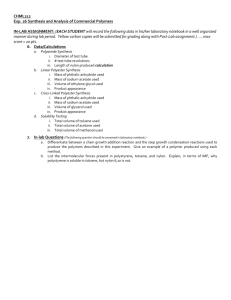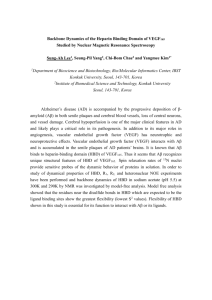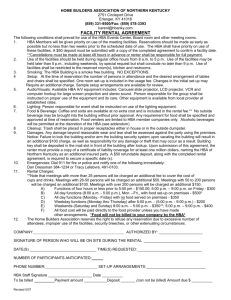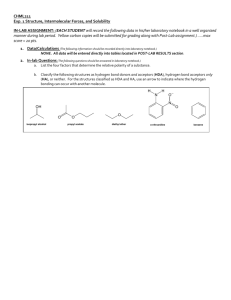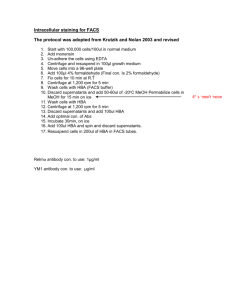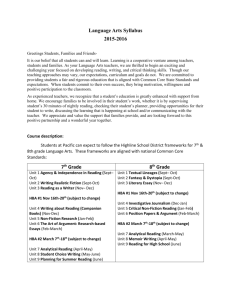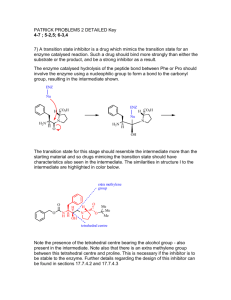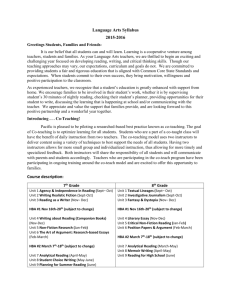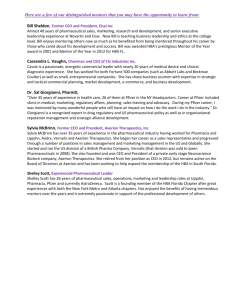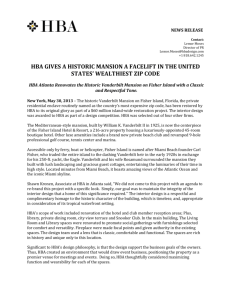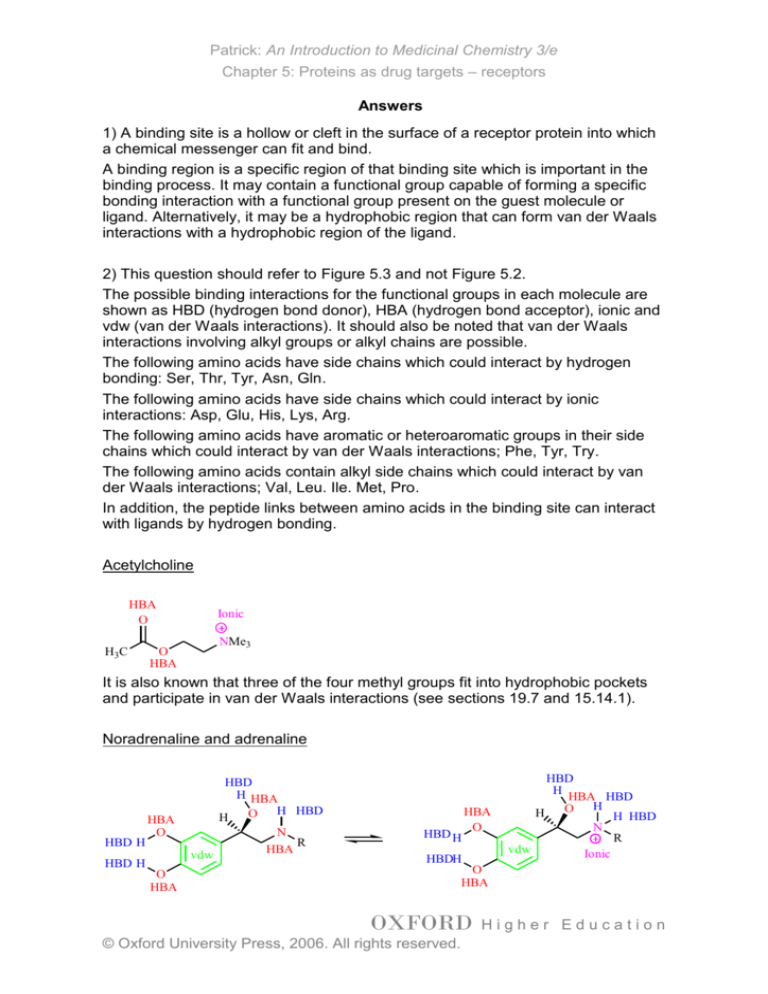
Patrick: An Introduction to Medicinal Chemistry 3/e
Chapter 5: Proteins as drug targets – receptors
Answers
1) A binding site is a hollow or cleft in the surface of a receptor protein into which
a chemical messenger can fit and bind.
A binding region is a specific region of that binding site which is important in the
binding process. It may contain a functional group capable of forming a specific
bonding interaction with a functional group present on the guest molecule or
ligand. Alternatively, it may be a hydrophobic region that can form van der Waals
interactions with a hydrophobic region of the ligand.
2) This question should refer to Figure 5.3 and not Figure 5.2.
The possible binding interactions for the functional groups in each molecule are
shown as HBD (hydrogen bond donor), HBA (hydrogen bond acceptor), ionic and
vdw (van der Waals interactions). It should also be noted that van der Waals
interactions involving alkyl groups or alkyl chains are possible.
The following amino acids have side chains which could interact by hydrogen
bonding: Ser, Thr, Tyr, Asn, Gln.
The following amino acids have side chains which could interact by ionic
interactions: Asp, Glu, His, Lys, Arg.
The following amino acids have aromatic or heteroaromatic groups in their side
chains which could interact by van der Waals interactions; Phe, Tyr, Try.
The following amino acids contain alkyl side chains which could interact by van
der Waals interactions; Val, Leu. Ile. Met, Pro.
In addition, the peptide links between amino acids in the binding site can interact
with ligands by hydrogen bonding.
Acetylcholine
HBA
O
H3C
Ionic
NMe3
O
HBA
It is also known that three of the four methyl groups fit into hydrophobic pockets
and participate in van der Waals interactions (see sections 19.7 and 15.14.1).
Noradrenaline and adrenaline
HBD H
HBD H
HBD
H HBA
O H HBD
H
HBA
O
vdw
N
R
HBA
HBD H
HBA
O
HBDH
HBD
H
HBA HBD
H
O
H
H HBD
N
R
vdw
Ionic
O
HBA
O
HBA
OXFORD
© Oxford University Press, 2006. All rights reserved.
Higher Education
Patrick: An Introduction to Medicinal Chemistry 3/e
Chapter 5: Proteins as drug targets – receptors
The amino group of both nordrenaline and adrenaline can exist as the free base
or as the protonated, ionised form. Note that the nitrogen can act as a HBA in the
free base but not when it is ionised. Further details on the binding interactions of
noradrenaline and adrenaline can be found in sections 15.14.1, 20.8 and 20.9
Dopamine
HBD H
HBD H
HBD
H
HBA
O
N
HBD
H
HBA
vdw
HBD H
HBD H
O
HBA
HBD
H
HBA
O
N
vdw
O
HBA
H
HBD
H HBD
Ionic
The amino group of dopamine can exist as the free base or as the protonated,
ionised form. Note that the nitrogen can act as a HBA in the free base but not
when it is ionised. Further details on the binding interactions of dopamine can be
found in section 15.14.1.
Glycine
Glycine is an amino acid which is more likely to exist as the zwitterion with both
the amino and carboxylic acid groups being ionised.
HBD
H
HBD H
HBA
O
N
C
HBA
HBD
H
O
HBA
HBD
HBD H H
N
H Ionic
HBD
HBA
O
Ionic
O
HBA
Serotonin
HBD HBD
H H
HBD
N H
Ionic
HBD
HBD
H
N H
HBA
HBA
O
H
HBD
HBA
O
vdw
N
H
HBD
vdw
N
H HBD
H HBD
The amino group of serotonin can exist as the free base or as the protonated,
ionised form. Note that the nitrogen can act as a HBA in the free base but not
when it is ionised. Note also that the heterocyclic nitrogen is unlikely to be a good
HBA since its lone pair interacts with the ring's system. Further details on the
binding interactions of serotonin can be found in section 15.14.1.
OXFORD
© Oxford University Press, 2006. All rights reserved.
Higher Education
Patrick: An Introduction to Medicinal Chemistry 3/e
Chapter 5: Proteins as drug targets – receptors
-Aminobutyric acid
HBD
H
HBA
O
N
HBD H
HBD
HBD H
H
N
H
HBD Ionic
HBD
H
O
HBA
HBA
HBA
O
Ionic
O
HBA
Glutamic acid
HBA
O
HBD
H
O
HBA
HBA
O
H
HBA N
H
H
HBD HBD
Ionic
HBD
H
HBA
O
O
HBA
O
HBA
Ionic
HBA
O
H
Ionic
O
HBA
N
H
H
HBD
HBD H
HBD
3) The three molecules are very similar to each other. Structures I and II differ
from acetylcholine in having an amino group and an ethyl group respectively
instead of a methyl group.
O
H3C
O
O
O
Acetylcholine
NMe3
H2N
O
NMe3
I
H3C
O
NMe3
II
One might expect structure II to be active since an methyl and ethyl group are
more similar to each other than an amino group. Both are hydrophobic groups
that can interact by van der Waals interactions. In contrast, the amino group is a
polar group that could interact by van der Waals interactions. The fact that
structure I is active and structure II is inactive suggests that it is not binding that is
crucial here and that the difference in activitiy is due to the sizes of the different
groups. The methyl and amino groups are similar in size whereas the ethyl group
is larger. If the space available in the binding site is limited, structure II may not fit
due to the larger ethyl group. Further details can be found in sections 19.7 – 19.9.
4) The differences between noradrenaline, isoprenaline and adrenaline are
highlighted below. Noradrenaline has a primary amino group, whereas the other
two structures have N-alkyl substituents.
OXFORD
© Oxford University Press, 2006. All rights reserved.
Higher Education
Patrick: An Introduction to Medicinal Chemistry 3/e
Chapter 5: Proteins as drug targets – receptors
HO
H
OH
H
HO
NH2
OH H
N
CH3
HO
HO
HO
CH3
OH H
N
CH3
HO
Adrenaline
Isoprenaline
Noradrenaline
H
This indicates that an N-alkyl substituent has a role to play in receptor selectivity.
Increasing the size and bulk of the N-alkyl substituent results in loss of potency at
the -receptor but an increase in potency at -receptors. These results indicate
that the -adrenoceptor has a hydrophobic pocket into which a bulky alkyl group
can fit, whereas the -adrenoceptor does not (see also sections 10.3.1.1 and
20.9.2).
5) The inactive metabolite has a methyl ether rather than a phenol group. This
indicates that the phenol group is an important binding group when isoprenaline
intercts with the adrenergic receptor. For example, the hydrogen atom of the
phenol group may act as a hydrogen bond donor to a crroesponding hydrogen
bond acceptor in the binding site. This interaction is no longer possible for the
inactive metabolite. Another possibility is that the phenolic oxygen acts as a
hydrogen bond acceptor and that the methyl group in the metabolite prevents this
interaction due to its size and bulk (see also sections 11.2.6 and 20.10.3).
HO
H
H
OHH
N
CH3
CH3
HO
MeO
OHH
N
CH3
CH3
HO
Inactive metabolite
Isoprenaline
6) This question is related to question 4 above. Larger and bulkier N-alkyl groups
result in selectivity for the -receptors (see also section 20.10.2)
7) Both molecules contain the identical moiety shown in red.
O
H
N
OH H
H
HO
OH
NH2
HO
Propranolol
Noradrenaline
The carbon bearing the alcohol group is an asymmetric centre has the same
configuration in each molecule. This is demonstrated by redrawing propranolol as
follows
OXFORD
© Oxford University Press, 2006. All rights reserved.
Higher Education
Patrick: An Introduction to Medicinal Chemistry 3/e
Chapter 5: Proteins as drug targets – receptors
H
OH H
N
O
Propranolol
Therefore, it is possible for this moiety in both molecules to form similar
interactions with the receptor. However, the aromatic systems are different and so
different interactions are possible here, which can account for propranolol acting
as an antagonist rather than as an agonist if a different induced fit results.
Propranolol is likely to show -adrenergic selectivity due to the fact that it has a
bulky N-alkyl substituent (compare questions 4 and 6, see also section 20.11.3.1)
8) There are clear structural similarities between dopamine and noradrenaline.
HO
NH2
HO
H
HO
OH
NH2
HO
Noradrenaline
Dopamine
For that reason, it it is possible that dopamine has similar binding interactions with
its receptor. Taking this argument further, strategies that led to antagonists for
adrenergic receptors might also work in finding antagonists for the dopamine
receptor.
Replacing the catechol ring system of noradrenaline with a naphthalene ring
resulted in antagonists, so similar tactics with dopamine might be successful. The
following structures might be worth investigating.
NH2
O
N
H
O
NH2
The first structure is a straight replacement of the catechol ring of dopamine with
a naphthalene ring. The other two structures are based on the adrenergic
antagonist propranolol, where the alcohol and/or N-alkyl groups have been
removed.
Since all these structures lack the side chain alcohol, they are unlikely to bind to
adrenergic receptors.
OXFORD
© Oxford University Press, 2006. All rights reserved.
Higher Education

